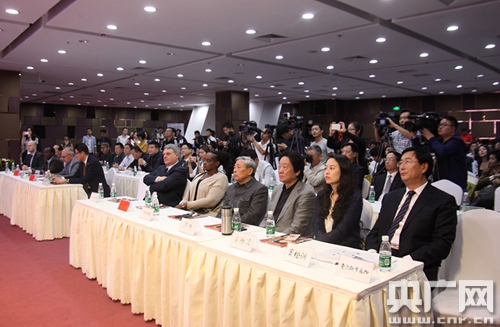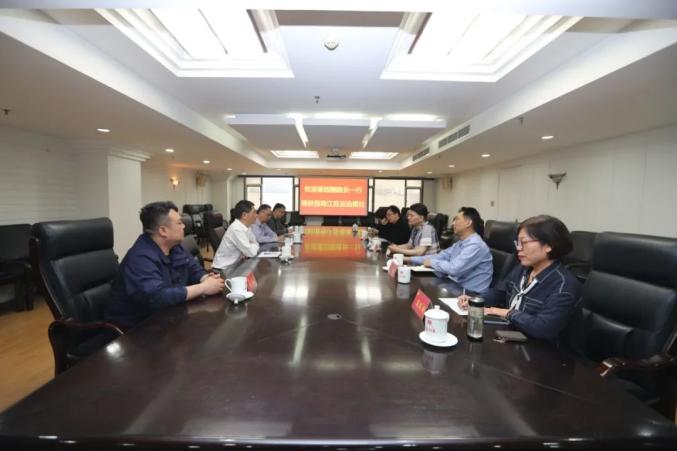Promote The "connection" Between China And ASEAN Railways, And This Alliance Pushes Standards To Take The Lead
Promote The "connection" Between China And ASEAN Railways, And This Alliance Pushes Standards To Take The Lead
Sichuan Online Reporter Kou Minfang Hao Fei On June 12, at the Second Belt and Road Science and Technology Exchange Conference Transportation Technology Support Connectivity Roundtable Conference, the "Belt and Road" ASEAN Railway Connectivity Standard Cooperation Alliance was launched
Sichuan Online Reporter Kou Minfang Hao Fei
On June 12, at the second "Belt and Road" Science and Technology Exchange Conference on Transportation and Technology Support Connectivity Roundtable, the "Belt and Road" ASEAN Railway Connectivity Standard Cooperation Alliance was launched, marking a further acceleration of China's railway connectivity and interoperability work between ASEAN.
Since the China-ASEAN Free Trade Zone was officially launched in 2010, bilateral trade has made great progress. In 2024, ASEAN trade with China was nearly 7 trillion yuan, a year-on-year increase of 9%. ASEAN has become China's largest trading partner for five consecutive years, accounting for about 15.9% of China's total foreign trade value.

Conference site.
In recent years, China has continuously broadened its southbound logistics channels. Taking Sichuan as an example, it has coordinated the launch of more than 3,800 southbound international trains such as the New Western Land-Sea Corridor, with a cargo distribution volume of nearly 150,000 TEUs, and a value of service import and export trade exceeds 10 billion yuan.
"The existing railways in Southeast Asian countries are mainly 'meter rail', and supporting facilities such as electrical networks and communication networks are not unified with China's railway standards." Zhu Minhao, director of the Sichuan Provincial Rail Transit Standards Committee and professor at Southwest Jiaotong University, introduced that if the railway standards are not unified, the trains will need to be removed from the cargo and replaced, which increases the logistics and transportation time.
The China-Laos Railway is a benchmark for the interconnection between China and ASEAN railways. As the first railway for interconnection between ASEAN and China, its successful operation cannot be separated from the role of "standard alignment". The China-Laos Railway is built in accordance with the standards of China's national railway, using a standard gauge of 1435 mm and a weight rail of 60 kg/meter. Departing from China, you can reach Laos with one train. A China-Laos Railway makes economic and trade exchanges between China and Laos closer. As of April 29 this year, the China-Laos Railway has sent more than 58.4 million tons of goods and more than 51.5 million passengers.
With the demonstration effect of the China-Laos Railway, the pace of railway interconnection among ASEAN countries is accelerating. In 2023, the Jakarta-Bandung High-speed Railway in Indonesia was opened; at present, the China-Thailand Railway is progressing smoothly and will be connected with Laos. These railways have achieved unified standards and will provide important support for the construction of the China-Laos-Thailand Economic Corridor.
The alliance was jointly initiated and established by Southwest Jiaotong University, the Railway Department of the Ministry of Public Works and Transport of Laos, the Standardization and Metrics Department of the Ministry of Industry and Trade of Laos, and the China-ASEAN Countries Standardization Cooperation and Exchange Center, and more than 30 domestic and industrial, academia and research institutions and institutions participated. Zhu Minhao introduced that in the future, the alliance will be committed to promoting "hard connectivity" of infrastructure and further improving the transportation network; at the same time, it will help "soft connectivity" of rules and standards, improve the consistency of standards, and promote trade facilitation. "Based on the standardization system of China's railway, we will help ASEAN countries establish independent standards systems."
"Standards are pioneering work and will play a fundamental role in promoting the interconnection of railways in ASEAN countries." Lu Chunfang, an academician of the Chinese Academy of Engineering, said that standard formulation is the prerequisite, and the key to interconnection lies in the implementation of standards. The alliance integrates China and ASEAN government, industry, academia and research resources, bringing together all parties' forces together, which will help form a more standardized and operational standard system, and thus promote the implementation of standards.
(Picture provided by Southwest Jiaotong University)





